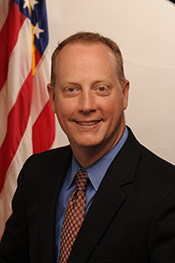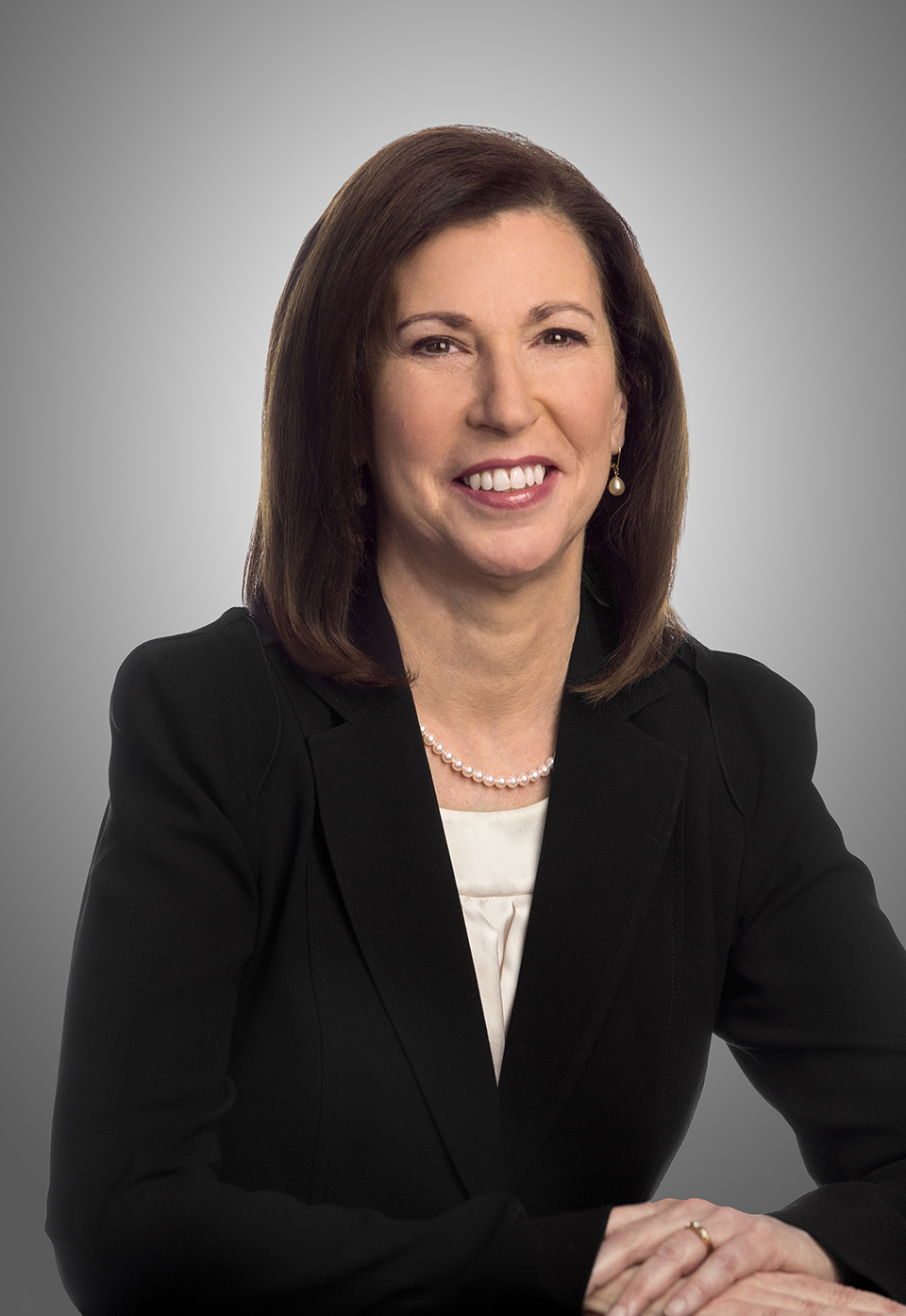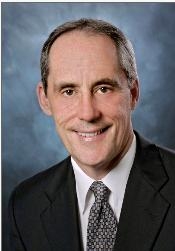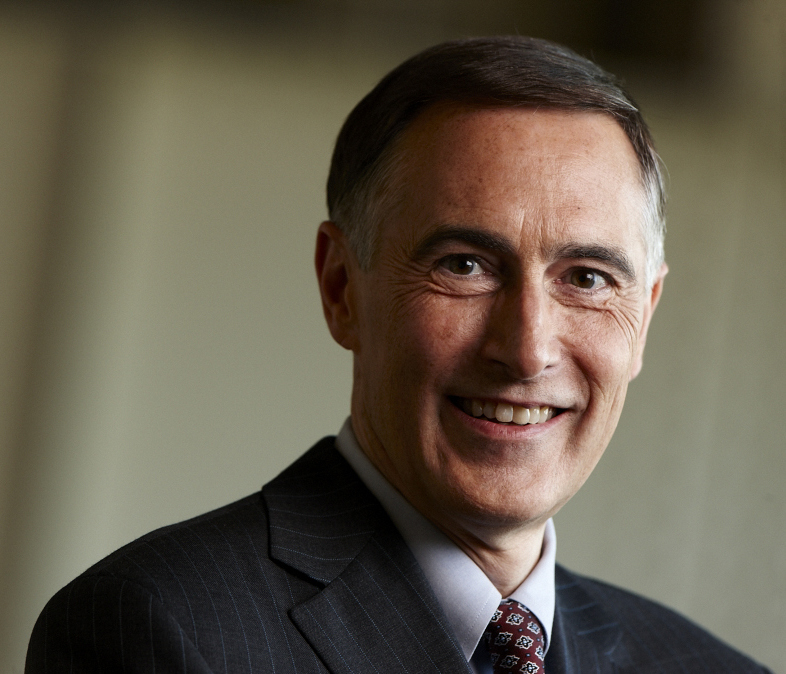Auto logout in seconds.
Continue Logout
This interview with Patrick Conway, CMO and acting principal deputy administrator at CMS, was conducted by Eric Larsen, managing partner, and Piper Su, VP of health policy, and was condensed by Amanda Wolfe, senior director.
Question: You have an immense job. You're the chief medical officer of CMS. You're also the only person to concurrently hold two directorships at CMS. And incidentally you're a year younger than me, which makes me wonder what I've been doing with my time the last few years. How did you come to have a role with these complementary and yet different mandates?
Patrick Conway: I love quality and safety work. My core background is in quality measurement and how you innovate to improve care.
I had been a White House fellow my first time in government and was CMO at the Office of Assistant Secretary for Planning and Evaluation at HHS. After that, I was in the delivery system, at Cincinnati Children's, and I was leading work that I loved. I had said that if the CMO job at CMS and director position at the Center for Clinical Standards and Quality (CCSQ) ever became open, I would strongly consider applying. Then-Secretary Kathleen Sebelius and CMS Administrator Don Berwick asked me to come back, and I'm heading towards five years in that role.
When Rick Gilfillan stepped down as director of the Center for Medicare and Medicaid Innovation (CMMI) in 2013, Marilyn Tavenner asked if I would be willing to be acting director and I became permanent Director later that year. And then when Marilyn left, Andy Slavitt became acting administrator, and he and Secretary Burwell asked me to be acting principal deputy administrator last February.
The exciting thing is that I can look back over the five years I've been here and see significant improvement, both internally and externally. At the same time, I'm still learning. I love my jobs.
Q: You're one of four children, and you come from an academically rigorous family. I understand that when you were growing up, if all four kids got straight As, the reward was that you could go out to dinner. But the catch was all four of you had to get straight As. I'm being half facetious, but I can see how that early experience in peer pressure influenced the behavioral economics at CMMI.
Conway: That is true—all four kids had to get all As, and we only went out to eat when that occurred. I won't name the sibling we put particular pressure on.
My parents allowed us a lot of independence, but there was a focus on academics. And although they didn't always explicitly talk about it, they both had a service mentality.
Q: Rick Gilfillan, your predecessor, talks a lot about balance. You have a demanding job, and you also have four kids at home, one of whom is an infant. How do you strike a balance?
Conway: Balance is a struggle for everyone, including me. I try to be home and have breakfast and dinner with my family as often as possible. I do work after everybody goes to bed. My own father would go back to the lab for several hours after we were all in bed, so maybe there are some similarities between him and me.
Balance matters to staff, too. I've had numerous staff say—and this always makes me a little uncomfortable—I'm modeling good work-life balance and that helps them try to have good work-life balance, too.
Q: I understand you still practice medicine, too.
Conway: I work at Children's National Hospital about one weekend every six weeks. I just love patient care. It reconnects me to why we do this work. My job at CMS is trying to help people, too, but there are few opportunities to work one-on-one with patients.
A mentor of mine said, if you like it—which I do, I love it—practice for as long as you possibly can because once you stop, you probably won't go back.
Cultivating innovation
Q: I'd love to get your thoughts on innovation. There's a lot of pressure for rapid results, but the nature of innovation is that it takes time and there will be a lot of prototyping and also failure.
Conway: I think we in government shouldn't consider it a failed innovation if we can learn important insights and apply that knowledge. If every model improves quality and lowers cost, then we're not actually testing the limits of innovation. We still have some learning to do in the innovation center and government about how to innovate much more rapidly. We're in a more rapid cycle today than we were five years ago, but there's still a significant improvement opportunity.
Q: At Cincinnati Children's, you were pioneering transformation at the provider level. Now, you're architecting delivery system transformation. You have unique vantage points on both the private and public sector. How do you foster, prototype, and advance innovation through those two lenses?
Conway: My experience in the delivery system in Cincinnati really shaped my thinking about what's possible in terms of population health management, improving care, and serving communities.
At CMS, we are really trying to put the right incentives in place to help systems. This gets to technical assistance and things like transforming clinical practice that we just announced a few weeks ago. We're offering the information that providers need for true population health management. I think we're generating a focus in our health system on how to truly achieve better care, smarter spending and healthier people. And the private sector and providers are also doing that work, which is positive.
There are two things I worry about. One is pace of change. This is my natural tendency, but I feel like we have to accelerate faster, we have to spread the successes quicker. The other thing I worry about is engaging the remaining portion of the provider community who are playing around the edges but generally aren't sure about joining in alternative payment models (APMs). How do you pick up that next group?
More about the shift toward value-based payments
The field guide to Medicare payment innovation
What good is a value-based care network if patients can't access it?
Navigating new payment programs
Q: The initiatives you're rolling out are individual programs, but there's also this pile-on effect as organizations participate in multiple efforts. Congress has also been active in pushing care transformation, most recently by passing the Medicare Access and Chip Reauthorization Act (MACRA). Are there forthcoming models, like the new physician payment system developed in that law, you see as especially impactful on quality and cost?
The MACRA framework is exciting for us at CMS and for providers, too. The physicians and others who can get a five percent bonus for APMs are thinking about how to get there. And for those not in an APM, the Merit-Based Incentive Payment System (MIPS) framework is exciting because they still can participate in quality and value and be rewarded. I don't think everybody has to be in an APM out of the gate. There's a transition period, and that's okay. And we're asking specialties to help us. You've got to help us develop the models that matter to the physicians and other clinicians.
Another model I'll mention is Comprehensive Primary Care Initiative, which is voluntary. It's had a significant number of participants, alignment with private payers and early promising results. I think it is the start of the future of primary care. We also launched demonstration projects that showed positive results in episodic or bundled payment, and we decided to test that further in a geographic manner via the Comprehensive Care for Joint Replacement model. We just finalized the rule on that model and it will launch in April 2016 and has galvanized change across the board.
Four must-dos for preparing for mandatory bundled payment
The last thing I'll name is the goals set by the Secretary earlier this year to have 30% of Medicare payment in APMs by 2016 and 50% by 2018. Government doesn't always do a good job of it, but setting clear goals has a market effect and can help get everyone aligned. I think we'll hit the 30% goal in 2016.
I think we've done a reasonably good job of laying out an array of payment models, and organizations are voluntarily joining them and then progressing on their level of risk as they learn and improve. The pace of positive change is accelerating.
Q: Can you talk about the connection between Medicare Advantage (MA) and these other programs? We hear a lot from organizations about how much of these are destination programs versus on ramps to something a little more sustainable. There is a subset of organizations saying, 'Let's just bypass the middle and go straight to MA.'
From our experts
Why some providers fail at Medicare Advantage—and what you can learn from their misstepsConway: We have a foundational principle that Medicare beneficiaries should have choice. Approximately 32% of beneficiaries today choose Medicare Advantage. We've now got more than 20% of beneficiaries in alternative payment models. If you add those up, you've got more than 50% of beneficiaries making proactive choices, either with an MA plan or an alternative payment model.
Different providers make a rational business decision to either put more or less focus on MA. A lot of the organizations that are successful in the Pioneer ACO program, and may be successful in the Next Generation ACO program, have an MA book of business. But I think you can still apply the same population management techniques to the 68% of the population not in MA and be successful.
Measuring quality and collecting data
Q: You co-authored a 2014 New England Journal of Medicine piece about performance measurement fatigue. A statistic that sticks out is: Of 48 state and regional measurement programs, there were 500 individual metrics and only a 20% overlap. What is your philosophy about how to catalyze this change?
Conway: On the theory of change, I'd call out some buckets. The incentive piece is first. How do we get the incentives to alternative payment models and value-based payment? Next is the care delivery piece—population management, integrating behavioral health, and so forth. Then, information. If you execute on those three categories well, you achieve the ultimate outcome, which is better care, smarter spending, and healthier people.
These are the foundational principles that we need to articulate more clearly to people. Public and private sector alignment is a key foundational principle. Part of the reason we do so much state innovation work is that we're trying to initiate change at the local level. We also have done significant quality measure alignment with the private sector, including payers, physicians and providers, and others, on core sets of measures that we hope to roll out very soon. And we launched the Health Care Payment and Learning Action network to catalyze public and private sector alignment and progress.
Our teams are thinking in a much more data-driven way. Our data capability, both internally and externally, is dramatically better now than it was five years ago. And if we keep that rate of change, five years from now, you can imagine a data ecosystem that is literally providing feedback as close to real time as possible.
Q: There's a huge opportunity for organizations in regard to quality requirements, but it's also scary for organizations that are held accountable for the first time. How do you ease them into that?
Conway: The data challenges are certainly significant. I'd say a few things. I think you want principles on consistent measures, with clear specifications, as well as the ability to validate data and to do it in a robust way.
Frequency of reporting and feedback is also important. Hospitals are reporting on a monthly to quarterly basis. We've talked about moving physicians to a similar schedule, but we've actually gotten some resistance. As much as people want quicker data, they actually like reporting just once a year. Ultimately, though, I think more frequent reporting allows for more frequent feedback.
If qualified entities and organizations like yours and others are using data that we put out there and giving it to physicians and clinicians in ways that are useful, that's terrific. There's no way the government can meet all the various needs at a local level. What we can do is be a provider of data.
Changing culture
Q: We've talked about changing culture externally, but you also were part of an internal culture change at CMS. How did CMS come to embrace Lean, and what results have you seen so far?
Conway: There was a manager at CCSQ who told me, 'I would never tell you if I disagreed with you.' And I said, 'No, no. I want you to tell me.' We went back and forth on that, and it evolved into a dialogue about change.
I thought a lot about culture change, and we ended up deploying Lean across CCSQ, beginning with talent brought in from outside health care and then teaching a bunch of internal people how to be Lean ambassadors and coaches.
It's helped us decrease contract modification time by greater than 50%, as well as decrease the time cycle for reviews from months to weeks. One of the early wins was that we found we could save whole FTEs of time in terms of meetings and reviews.
The whole point of Lean is you can be the change. You own it. You tell us how to change the process. It started with one group in CCSQ then spread to all of CCSQ and then it spread to CMMI with similar results. And now, it's spreading to all of CMS. I think it may be one of my larger impacts on the organization long term.
Looking ahead
Q: As someone who's been in D.C. for a long time, you've seen what the last years of a presidential administration can be like. There's usually a deceleration of activity. However, there seems to be an acceleration of activity as the Obama administration winds down. How are you approaching the last months of the current administration?
Conway: I haven't mentioned this yet, but I'm not a political appointee, so I could still be here in 2017. We are trying to accelerate purposefully. The way we view it that is the administration has X period of time left, and we're trying to take on the major activities that we think will help us reach our goals. And I view this as a much longer-term journey. I have been working in healthcare for 20 years now and I think the last five have seen the most positive delivery system reform change and innovation in our nation's history. But we need to continue to improve faster. The people and future of our country depend on it.
Q: One of the questions we get from organizations that are investing in these federal quality and payment programs is: What happens when the administration changes?
Conway: If I were on the other side, the provider side, I would keep making those investments. The Innovation Center has models and work in every state and hundreds of communities across the country, and it's driving positive change. I think that's increasingly recognized.
I've worked in a Republican administration and a Democratic administration, and I worked on value-based health care in both.
I think delivery system reform has bipartisan support, too, both on the Hill and in whatever administration comes in next, whether it's Democratic or Republican. Work on delivery system reform will continue, no matter what. It may take slightly different permutations, but it will continue.
Q: We've talked a lot about the varied responsibilities and oversight you have. What keeps you engaged in this work?
Conway: In my Baltimore office, I have a whiteboard with three boxes. The first box is, 'Be a great husband and father.' The second box is, 'Catalyze the health system and achieve better care, better health, and smarter spending.' The last box is, 'Patients and families first.' None of the boxes are checked because in classic quality improvement fashion, I'm always working on it.
I had a conversation with my father when he was passing away from cancer where he asked, 'What do you want to do long-term? Tell me again.' I said, 'I want to have the biggest positive impact on the health system as possible.' He said, 'The health system's really complicated, and there's a lot of money in that system. But if somebody's going to do it, you have great perseverance, so it might be you.'
Get more lessons from the C-suite
See the Daily Briefing's archive of must-read interviews with other top hospital and health system leaders, including:
 Meet Sarah Krevans, Sutter Health's next CEO
Meet Sarah Krevans, Sutter Health's next CEO
Sarah Krevans, current COO of Sutter Health, talks about what lies ahead for her system as she takes over as CEO next year. Outgoing CEO Patrick Fry offers some reflections on his 30-year career. Read our interview with Sarah and Patrick.
 Cedars-Sinai's CEO survived an earthquake on his first day. Here's what shake-ups he sees for the health care industry.
Cedars-Sinai's CEO survived an earthquake on his first day. Here's what shake-ups he sees for the health care industry.
Thomas Priselac, president and CEO of Cedars-Sinai Health System, discusses authentic leadership, the future of academic medical centers, and how his institution is approaching partnerships. Read our interview with Thomas.
 Aurora Health Care has had a great year. So why does its CEO want to 'self-disrupt'?
Aurora Health Care has had a great year. So why does its CEO want to 'self-disrupt'?
Nick Turkal, CEO of Aurora Health Care, talks about the keys to his system's successful year, how he thinks about 'systemness,' and why it's time to 'self-disrupt.'
Don't miss out on the latest Advisory Board insights
Create your free account to access 1 resource, including the latest research and webinars.
Want access without creating an account?
You have 1 free members-only resource remaining this month.
1 free members-only resources remaining
1 free members-only resources remaining
You've reached your limit of free insights
Become a member to access all of Advisory Board's resources, events, and experts
Never miss out on the latest innovative health care content tailored to you.
Benefits include:
You've reached your limit of free insights
Become a member to access all of Advisory Board's resources, events, and experts
Never miss out on the latest innovative health care content tailored to you.
Benefits include:
This content is available through your Curated Research partnership with Advisory Board. Click on ‘view this resource’ to read the full piece
Email ask@advisory.com to learn more
Click on ‘Become a Member’ to learn about the benefits of a Full-Access partnership with Advisory Board
Never miss out on the latest innovative health care content tailored to you.
Benefits Include:
This is for members only. Learn more.
Click on ‘Become a Member’ to learn about the benefits of a Full-Access partnership with Advisory Board
Never miss out on the latest innovative health care content tailored to you.
